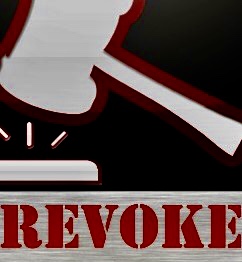
Certain claims such as proving a will in solemn form must be brought by petition, and if the matter is to proceed, the petition must be converted to an action by way of a court order.
In Kerfoot v Richter 2018 BCCA 238 the executor of an estate brought a petition to prove the will of the deceased in solemn form. The beneficiaries in the will were the deceased’s three adult children, one of whom received only a small portion of the estate. The appellant disputed the validity of the will and applied to have the proceedings converted from a petition to an action. The appellant contended that the deceased lacked testamentary capacity of the will was procured as a result of undue influence by her two siblings, the respondents.
Her application was dismissed by the chambers judge but the Court of Appeal allowed the appeal and ordered that the petition be converted to an action.
The appeal court stated that the test to be applied on an application to convert a proceeding brought by petition to an action is whether on relevant facts and applicable law, there is a bona fide triable issue. The materials before the chambers judge were sufficient to establish a triable issue.
In making the order to convert the petition into an action, the trial judge will continue to have full discretion to give directions concerning the out procedure to be followed in accordance with Supreme Court rules 22 –1-(7) (d) and 25-14 (8).
Rule 25-14(8) provides a similar discretion to the court to give directions about the procedure in estate matters, and provides:
8. Without limiting any other power of the court under this or any other part of the Supreme Court civil rules, the court may, on its own motion or on application, give directions concerning the procedure to be followed in any matter under this part, and without limiting this, they give directions respecting any of the following:
a) The issues to be decided;
b) who the parties will be, including directions for the addition or substitution of a party
c) how evidence may or must be presented;
d) summary disposition of any or all issues in the matter
e) the trial or any or all of the issues in the matter
f) pleadings;
g) examinations for discovery and discovery of documents, service or delivery of a notice, process, order or document on any person
h) dispensing with service or delivery
i) representation of any person or interest.
The court applied the test in Robertson v. Dhillon 2015 BCCA 469, where the appeal court confirmed that the test is akin to the test to be applied for summary judgment, that is whether on the relevant facts and applicable law, there is a bona fide triable issue.
Where there are disputed facts in the pleadings, the party who seeks either summary judgment or dismissal bears the evidentiary burden of showing that there is no genuine issue to be tried, and that is proven through evidence. McLean v. Law Society British Columbia 2016 BC CA 368, at paragraphs 36 – 39.
In considering evidence, the court must not way it, but is limited to assessing whether it establishes a triable issue. The court referred to Skye Bridge investments LTD v. Metro motors LTD 2006 BC CA 500:12. If sufficient material facts of being pleaded to support every element of a cause of action, but one or more of those pleated material facts are contested, then the judge ruling on a rule 18 (6) application is not to weigh the evidence to determine the issue of fact for the purpose of the application. The judges function is limited to a determination as to whether a bona fide triable issue arises on the material before the court in the context of the applicable law. If a judge ruling on a rule 18 (6) application must assess and weigh the evidence to arrive at a summary judgment, the plane and obvious are beyond doubt test is not be met.
While a judge is not to weigh evidence, he or she may draw inferences that are strongly supported by undisputed facts. Importantly, a party seeking to establish there is a triable issue cannot rely on mere allegations, but must establish the existence of material issues , Canada v Lameman 2008 SCC 14 at paragraph 11. It is this latter requirement that precludes a matter from being referred to trial on the basis of mere assertions.




